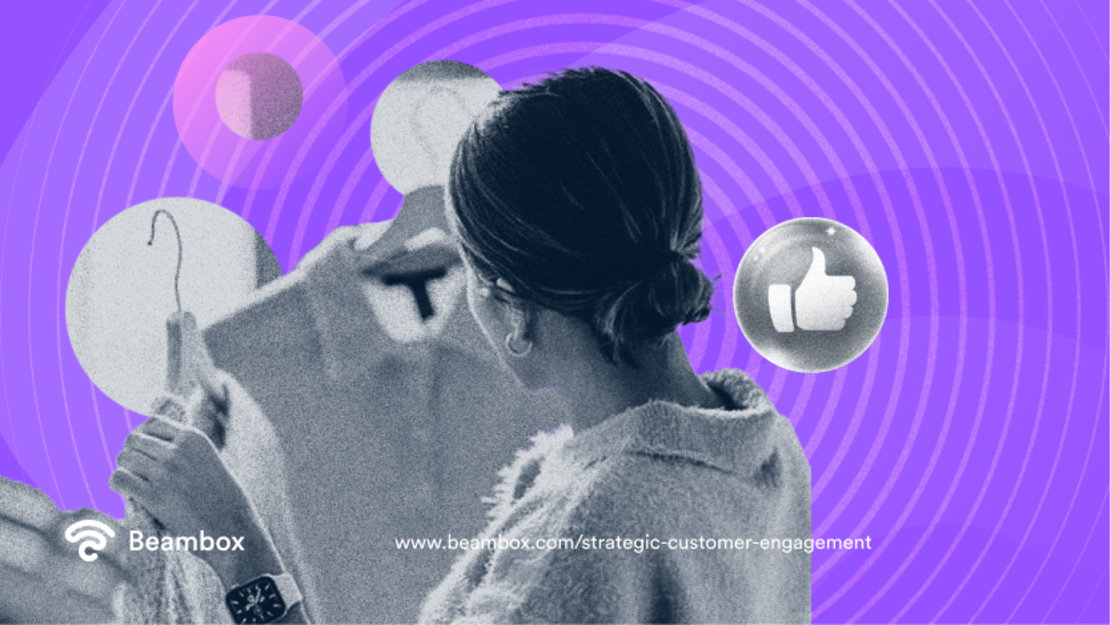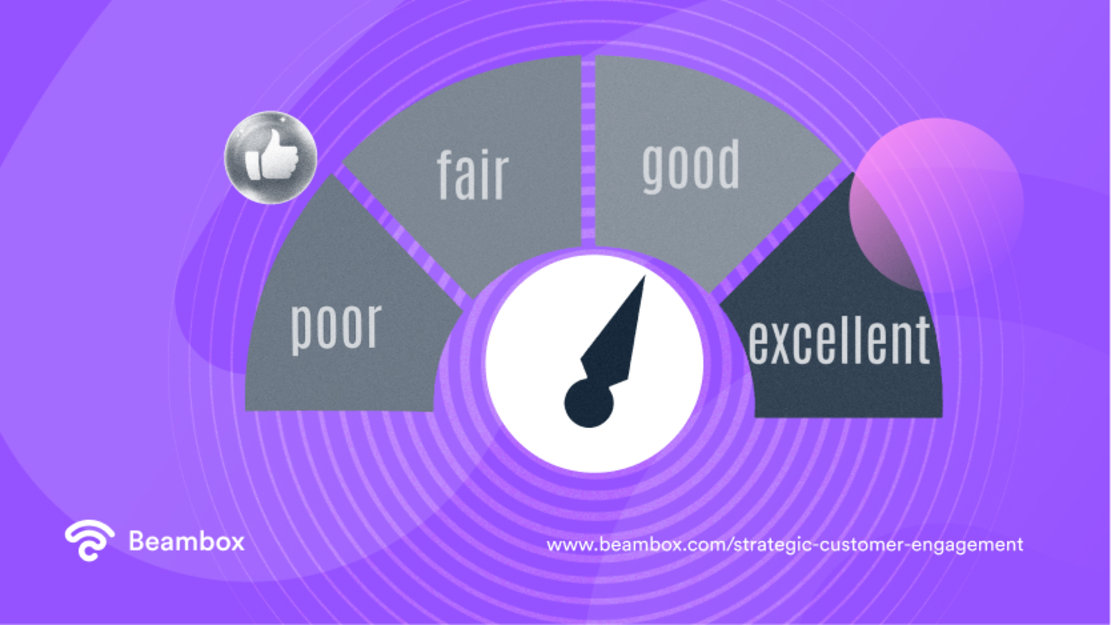Strategic Customer Engagement That Boosts Growth
Strategic customer engagement is a common term in online marketing circuits nowadays. Unconsciously, you may already be practicing customer engagement. But you need to take it a step further to make it strategic.
If your marketing strategy involves e-commerce, you need to be more deliberate in this activity.
You may be thinking: “How can I be more deliberate in customer engagement? What strategies will turn engaged customers into marketing advocates?” The answer may baffle you now. Understanding customer engagement is simple.
Stop. Wait a minute. We’re not saying customer engagement is easy. What we’re saying is it’s simple but far from being easy.
This article will simplify strategic customer engagement to help your small business grow. First, we will define customer engagement strategy and explain why it is crucial for your business. Then, we will explore how to develop a strategy and draw some examples.

What Is Customer Engagement Strategy?
What is a customer engagement strategy? It is a planned approach used by businesses to create positive customer experiences. It aims to enhance customer satisfaction, loyalty, and advocacy. It also involves various techniques and channels to cultivate meaningful interactions and establish lasting customer relationships.
Effective customer engagement strategies cover multiple touchpoints along the customer journey. This journey includes multiple stages from pre-purchase, purchase, and post-purchase (more on later.) It also requires understanding customer needs, preferences, and expectations and tailoring interactions accordingly.
As you can see, this calls for personalized marketing campaigns. Proactive customer service and social media engagement are also involved. Even launching loyalty programs and implementing a customer feedback collection tool would help.
Personalization is a critical element of customer engagement strategies. You need to understand customer preferences and consumer behavior to deliver relevant and targeted content or offers. How is that achieved?
Data-driven approaches like customer data analysis and customer relationship management systems work well together. Marketing automation tools also help.
Strategic customer engagement aligns with business goals and brand values to be effective. It should also reflect the company’s commitment to delivering exceptional customer experiences. It must be consistent across all customer touchpoints and adaptable to changing customer nuances.
Another term in use is “user engagement strategy,” which basically means the same thing.
To summarize: a customer engagement strategy is a comprehensive approach that builds meaningful customer relationships. It leverages personalized, relevant, and consistent experiences across various touchpoints. It requires understanding customer needs, listening and responding to inquiries and customer feedback, and aligning with business goals and brand values. A strong customer engagement strategy can enhance customer satisfaction, loyalty, and advocacy, ultimately leading to business success.

Why Develop Strategic Customer Engagements?
As you can see in the previous discussion, strategic customer engagement is a crucial ingredient for small businesses. It can bring about immeasurable benefits. Let’s take a look at some of them.
-
Builds customer loyalty: Engaged customers are likelier to remain loyal to the business. They make repeat purchases and recommend the business to others through word-of-mouth marketing.
-
Provides insights into customer preferences: Active customer engagement allows businesses to gather valuable customer feedback, insights, and preferences. These can inform businesses about product development, marketing strategies, and overall business decisions.
-
Helps differentiate from competitors: Small businesses create a brand identity that sets them apart by establishing emotional connections.
-
Drives sales and revenue: Engaged customers make larger purchases, become repeat customers, and spread positive word-of-mouth, increasing sales.
In conclusion, strategic customer engagement is crucial for small businesses. It leads to increased customer loyalty and provides insights into customer preferences. It also helps your business stand out from competitors and drives sales and revenue growth.
Used effectively, customer engagement builds meaningful customer relationships and achieves long-term success for small businesses.
What Are the Stages of Customer Engagement?
There are multiple levels of engagement, each bringing targeted results. In this section, let us address the question: What are the stages of customer engagement?
Customer engagement varies depending on the approach or model used, but here are some common stages:
-
Awareness: This is when potential customers become aware of a product or service. Theft may learn about it through social media, advertising, word-of-mouth, or other marketing efforts.
-
Interest: Once aware, potential customers may develop an interest in the product or service. This happens once they recognize appealing features or identify problems it could solve.
-
Consideration: At this stage, potential customers actively consider whether to make a purchase. They may compare options, read reviews, or seek more information.
-
Purchase: After deciding to buy, customers make a purchase.
-
Post-purchase: Engagement continues after the purchase, with customers providing feedback, seeking customer support, or sharing their experiences.
-
Loyalty: If customers have a positive experience, they may become loyal, making repeat purchases and recommending the product or service.
-
Advocacy: Finally, loyal customers may become advocates, sharing positive experiences through reviews, social media, or other means.
Each stage allows the business to interact and nudge the customer to the next stage. To do that takes strategic customer engagement.

10 Strategic Customer Engagement Tips
A holistic approach is needed to engage customers, effectively encompassing all stages of customer interaction. Here are some tips for building strategic customer engagements that fit the abovementioned stage.
Strategic Customer Engagement Tip #1: Share Your Company’s Story.
Share your company culture and the “why” for your business. Infuse your brand with humanity through messaging highlighting your mission, vision, and story. Use stories: they are powerful because they are memorable and relatable. Put your customers in the center by relating to their goals and frustrations and forming a shared vision.
Strategic Customer Engagement Tip #2: Personalize Campaigns.
Make your customers feel valued and unique in a sea of generic experiences. Listen to them and add personalized touches based on insights gained from data and surveys. Create customized communications and events that demonstrate your understanding of their needs. Only some prospects may respond, so use data to gauge the effectiveness and only push if it resonates.
Strategic Customer Engagement Tip #3: Be an Active Listener.
Listen to your customers’ feedback, what they say, and their nuances. Understand how they view your business compared to competitors.
Make it simple for customers to provide feedback, share their experiences, and follow up. Promptly follow up to show your commitment to improving the customer experience.
When dealing with negative feedback, focus on solving the issue rather than just appeasing the customer.
Strategic Customer Engagement Tip #4: Share Useful Content.
Customers seek solutions, not just products. They search for answers to common challenges. Position your company as a solution by providing authentic resources that address their needs.
To reach your customer base, distribute content across various channels, such as videos, blogs, and social posts. Share evergreen content with lasting value, such as proven tips and practical techniques that your customers will find helpful.
Strategic Customer Engagement Tip #5: Be Generous With Rewards.
Reward loyal customers with valuable freebies they need, such as information on product optimization or cost/benefit analysis. Use free benefits to attract new customers as well. Offering a taste of what you offer without giving away too much also works.
Strategic Customer Engagement Tip #6: Leverage Social Media.
Customers now express their feedback through social media platforms like Twitter, Facebook, TikTok, and Instagram. Take advantage of these tools to directly access your customers’ thoughts and feelings. Interact by responding to comments, reposting user-generated content, and providing helpful resources to strengthen customer relationships.
Strategic Customer Engagement Tip #7: Collect Customer Feedback.
Gather both technical data and qualitative feedback to gauge customer satisfaction. Use CRM, sales engagement platforms, and other tools for quantitative data. Follow up and communicate effectively through a system of checks and balances. Even negative feedback can be valuable for understanding customer needs and improving success.

Strategic Customer Engagement Tip #8: Host Online Events
Companies can connect with customers worldwide through online engagements. However, it’s important to have a specific purpose for each engagement. Ask yourself why you’re hosting the event and what you hope to achieve. Events showcasing your products and services increase conversions and brand exposure. They also offer a networking opportunity for your customers, creating a supportive community within their industry.
Strategic Customer Engagement Tip #9: No-nonsense Customer Support.
Empower your customers to succeed with a customer support center that provides resources and answers to their questions. Ensure they have everything they need to make informed consumer purchasing decisions and fully utilize your products. Customers may feel safe and confident with proper support, communication, and information. Customer support also reduces repetitive inquiries for your team and ensures timely access to customers’ pressing needs.
Strategic Customer Engagement Tip #10: Automate Using an Engagement Platform.
A customer engagement platform helps to streamline your strategy, automate touchpoints, and improve the overall customer experience. Use tools and technology to create smooth interactions across different channels, streamline workflows, and reduce repetitive tasks for your sales team. Although manual tracking may work initially, modern tools provide optimized activities. They provide access to revenue growth through data analysis of buyer sentiment.
Customer Engagement Questions You Need To Ask
Focus on addressing the following customer engagement questions to evaluate your strategy and ensure effective implementation.
-
How do customers view their experience with your brand? A memorable, customer-centric experience is likely to result in better engagement. Identify areas for improvement to enhance the overall experience and guide them toward making consumer purchasing decisions.
-
Are you actively engaging with your customers? Consistent communication is crucial to strategic customer engagement. Marketers need to provide value in their messages to stay top of mind.
-
How do you gather consumer data? Before analyzing your customer insights, assess how you collect them. Are your data acquisition systems up-to-date? Do you rely on first-party data or other methods? First-party data is valuable for accurate and reliable insights. Customers willingly provide it, resulting in more reliable profiles and insights.
-
Which audiences engage the most? Understanding engaged audiences aids in crafting effective marketing messages. Identify engaged buyer profiles to create tailored content, optimize budget, and increase conversions.
-
What areas should we continue doing? Balance growth, change, and customer engagement. Refrain from upsetting your entire customer base by changing your website or email format without understanding their preferences.
-
Are you achieving your customer engagement goals? Set expectations and measure customer engagement. Establish clear KPIs and real-time metrics on digital platforms for improvement. KPIs provide a clear roadmap for success.
-
Do your contents offer value for different audience types? Create engaging content for multiple buyer profiles. Consider communication preferences and channels of different audiences to craft resonant content.
-
Are you using tools and technology that provide customers with a value-added experience? Evaluate tools and technologies for effective online consumer engagement. Consider re-evaluating digital strategy and conducting annual audits to identify areas for improvement in your brand’s digital transformation journey.

Leverage Strategic Customer Engagement
As apparent, strategic customer engagement calls for effectively gathering and gaining insight from relevant data. Every marketing campaign depends on the data you can keep. That includes the content you produce, the social media channels you use, and the frequency and timing of your campaign.
Technology and automation can help you harvest the data you need and create a composite profile of your target customer. Tools such as guest WiFi, routers, and marketing software are the easiest way to collect data.
Beambox’s WiFi digital marketing solution can help you design a strong customer engagement strategy. You can get reviews, contact lists, and information from your new and loyal customers through Beambox’s guest WiFi network.
Learn more about Beambox and start growing your business now.
Get Started With Free WiFi Marketing
Beambox helps businesses like yours grow with data capture, marketing automation and reputation management.
Sign up for 30 days free


